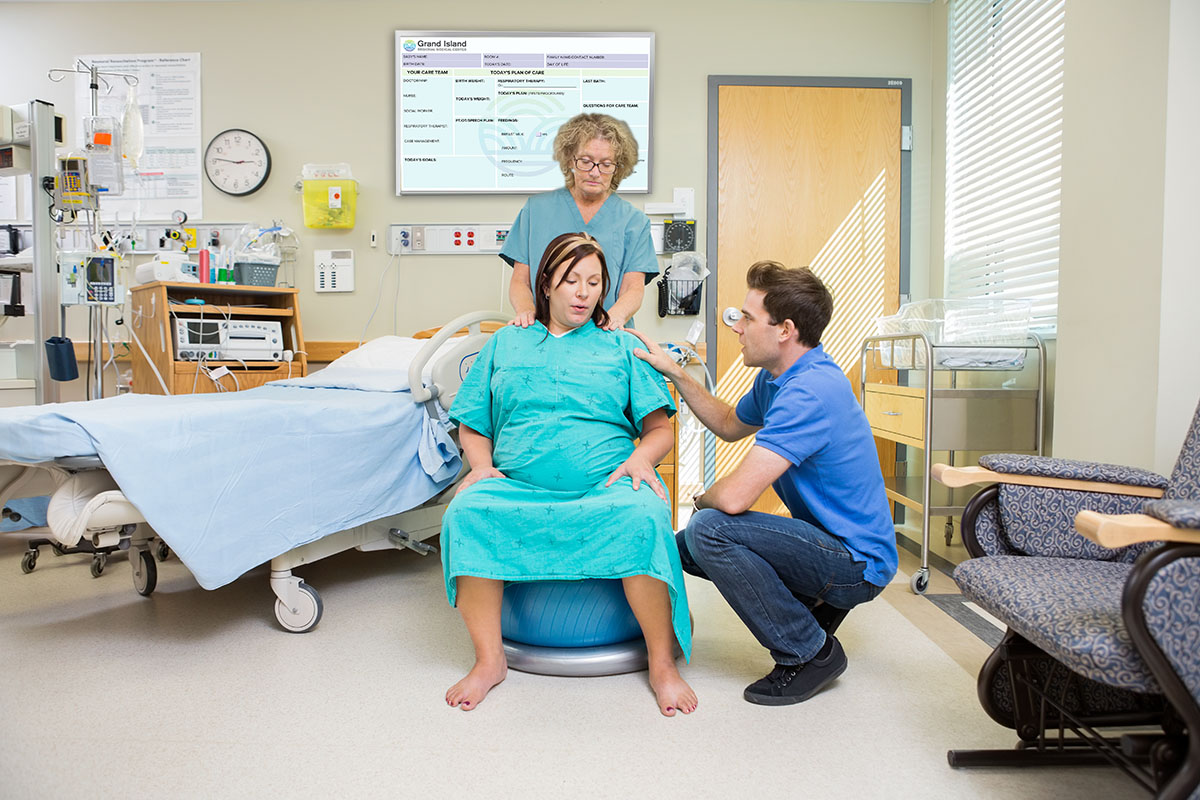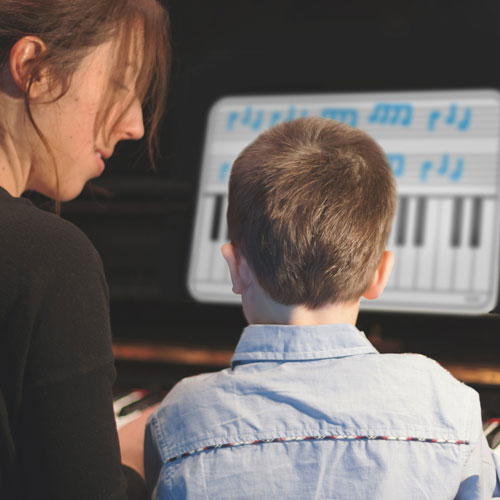
TeamBirth is a new movement within the world of labor and delivery designed to ensure that laboring patients have a voice in decision-making throughout their birthing experience. TeamBirth's philosophy is aided through dry erase boards, which track and record certain events in the birth process. This movement aims to change the traditional world that has once shaped Labor and Delivery Units into one that is more patient centered.
The TeamBirth Movement
TeamBirth is a movement created by Ariadne Labs that aims to ensure that those giving birth and the clinicians caring for them are in a constant state of shared input and understanding of decisions during labor and delivery. By engaging the patient in the birth process, TeamBirth aims to reduce the need for Cesarean sections.
TeamBirth was designed to operationalize best practices involving communication, teamwork, and clinical care. Ariadne Labs designed TeamBirth in collaboration with many professional organizations, including ACOG (American College of Obstetricians and Gynecologists), SMFM (Society for Maternal-Fetal Medicine), ACNM (American College of Nurse-Midwives), and AWOHNN (Association of Women's Health, Obstetric and Neonatal Nurses).

Avoiding unnecessary Cesarean sections was the catalyst within the TeamBirth movement; while common, C-Sections pose risks for the child and birthing person. These risks include extended recovery periods, an increased risk of infection, and a higher possibility of injury or death. "We are fairly confident that, when you look nationally, the plurality-if not the majority-of C-sections are probably avoidable," says Dr. Neel Shah of Harvard T.H. Chan School of Public Health and leading researcher of TeamBirth.
This target was initially decided on due to the research showing that if a laboring patient's first birth were Cesarean, all following births would subsequently be as well. "If you can impact that decision-making process, you can perhaps change the culture that might lead to unnecessary Cesarean," states Gene Declercq, Professor of Community Health Sciences at Boston University School of Public Health.
The project focuses on communication throughout labor and delivery. This is because many physicians are divided on when it's the right time to perform a C-section, whether this is based on clinical habits or their hospital's culture. TeamBirth aims to give patients a dignified experience while empowering their voice and shared decision making throughout the labor experience. Doing so creates a safe labor experience, physically and emotionally.
Research in Developing TeamBirth
To design TeamBirth, researchers needed a plan. First, they focused on developing a scalable, intrapartum care process to improve communication and teamwork between clinicians and patients. In doing so, they researched the harmful discrepancies in the quality of childbirth care in the United States and potentially beyond.
Ariadne Labs' research emphasizes variations found in hospital-level Cesarean birth rates. This was based on broad stakeholder interests within the relationship between Cesarean as a proxy for quality of labor management. Then, researchers focused their problem statement on facility-level improvement rather than health policy reform, professional education, or other strategies.
Ariadne Labs then curated a group of over fifty experts from different childbirth disciplines to critically review the problem scope, potential solutions, and the ranking of these strategies. Choosing these stakeholders was calculated to ensure a diverse pool of perspectives and broader context, including those from various geographical locations, hospital types, and practice models. This allowed the development to set hierarchical criteria for evaluating the merits of each strategy to narrow the focus of their design work further.

Researchers recognized that the lack of communication throughout labor, specifically in keeping the laboring patient informed and engaged in decision-making, may impact the quality of care and Cesarean rates. TeamBirth found that decision-making is often tacit and one-sided in traditional labor settings rather than collaborative. This finding allowed TeamBirth to begin with the intention to target said problems in hopes of lowering Cesarean rates and allowing laboring patients dignity and a voice throughout their labor experience.
TeamBirth's design focused on simplicity, communication, and setting shared expectations. Simplicity in the design should provide a minimum necessary structure to make it easier for teams to do the "right" thing. They are designed for communication to ensure that the method promotes teamwork, including "psychological safety" and structured communication opportunities within the care team. This includes the patient, nurse, delivering practitioner, and others who may provide clinical care and support. Finally, setting shared expectations allows for every planned evaluation to promote transparency for all care-team members.
TeamBirth's design aims to ensure that these ideal practices occur more reliably rather than to initiate new methods. TeamBirth found they had the opportunity to improve the safety and experience of childbirth through intrapartum care that promotes reliable and structured communication and teamwork.
How TeamBirth Works
TeamBirth's methodology is based on intrapartum care comprised of brief team meetings focused on communication and steered by the shared dry erase board. TeamBirth hypothesized that decision-making would be more consistent and precise by enabling more reliable transmission. This would then lead to more inclusive, safer, patient-centered decisions, including those about the timing of admission and delivery.
Patients and clinicians often find that discussions throughout the labor and delivery conclude without a unified understanding of when the following assessment or discussion should occur. To fight this, TeamBirth begins with team members mapping out the desired delivery plan, which includes the laboring patient's preferences alongside the medical team's guidance. This desired delivery plan is then displayed on a dry erase board that promotes four areas that must be acknowledged or discussed throughout the labor process.
First, on the board, each member of the labor and delivery team will have their name written on the board. This begins with the laboring patient, then includes the nurse, delivering practitioner, and ideally the support person, key clinical or non-clinical team members. This behavior aims to signify the value of each member's input and provide everyone the comfort to contribute through the labor process.
Second, providing space, aiming to elicit the laboring patient's references from symptoms and experiences throughout labor. This way, clinical care teams can gather vital information to help with clinical assessments and care plans.
Thirdly, dictating the care plan to support and manage your laboring patients' well-being, fetal well-being, and labor progression provide clarity based on the decision to avoid risk conflation. This ensures that the whole care team takes the best measures throughout the labor process to limit unnecessary medical interventions and risk factors.
Finally, setting shared expectations for what will occur before the subsequent evaluation is key. One of the most critical factors featured on the dry-erase board is the section labeled Next Assignment. Dr. Kim Dever, the chair of the OB-GYN department at South Shore Hospital, explains, "Because one of the things I often heard from patients is that they didn't know what was going to happen next. Now they know." Setting expectations and following can be achieved through periodic team meetings ("huddles") involving the care team and laboring patient. Huddles bring critical team members (patient, nurse, and practitioner) together at crucial moments and provide a structure for shared discussion and decision-making. Huddles are navigated by the presence of the shared planning dry erase board centrally located in the labor and delivery room.

The process of having team huddles fosters an environment of collaboration and communication that not only brings accountability to decisions, but ensures the laboring patient's psychological safety and transparency on what will occur throughout their birthing process. The huddle process and collaborative planning dry erase board, in turn, create a shared mental model for all team members when making critical decisions. By synthesizing simplified yet structured communication and shared decision-making processes into existing clinical workflows, there is a higher chance of success and acceptance.
TeamBirth's movement may not fix every problem in childbirth throughout the United States, such as bias, lack of prenatal education, and staggering mortality statistics across many demographics. Yet, TeamBirth is a movement that has worked hard to change the way Labor and Delivery Units have made decisions through the aid of dry erase boards. Doing so gives laboring patients the confidence and power to make decisions during their delivery experience. In turn, they hope to lower the number of Cesareans in the United States and ensure the safety of patients.
As a company, OptiMA® Inc has worked hand-in-hand with the healthcare industry for over 30 years. We understand how communication boards are pivotal within the healthcare industry for communication, efficiency, and patient care. We have worked ourselves to perfect the best dry erase surfaces on the market for our valued healthcare professionals and hospitals alike. We offer everything from standard boards all the way to durable, chemical-resistant, scratch-resistant Prism-Lock™.
Looking to learn more about OptiMA® Inc, hospital boards?
About OptiMA® Inc.
We are a small business whose products are made in the U.S.A. We specialize in dry-erase boards, dry-erase wallcoverings, portable dry-erase units, high-quality custom-printed whiteboards, fast shipping, and five-star customer service. Over the last three decades, we've worked hard to deliver industrial-quality whiteboard solutions that won't hurt customers' budgets.
- TEAMBIRTH. Ariadne Labs. (2021, July 23). Retrieved September 19, 2022, from https://www.ariadnelabs.org/delivery-decisions-initiative/teambirth/
- Bebinger, M. (2018, November 24). Twin's difficult birth put a project designed to reduce C-sections to the test. NPR. Retrieved September 19, 2022, from https://www.npr.org/sections/health-shots/2018/11/24/662451106/twins-difficult-birth-put-a-project-designed-to-reduce-c-sections-to-the-test
- Lauren Spigel, Avery Plough, Victoria Paterson, Rebecca West, Amanda Jurczak, Natalie Henrich, Susan Gullo, Brett Corrigan, Pam Patterson, Trisha Short, Lisa Early, Margie Bridges, Elizabeth Pesek, Marianne Pizzitola, Dianna Davis, Keri Kirby, Christina Borduz, Neel Shah, Amber Weiseth, Implementation strategies within a complex environment: A qualitative study of a shared decision‐making intervention during childbirth, birth, 10.1111/birt.12611, 49, 3, (440-454), (2022).





